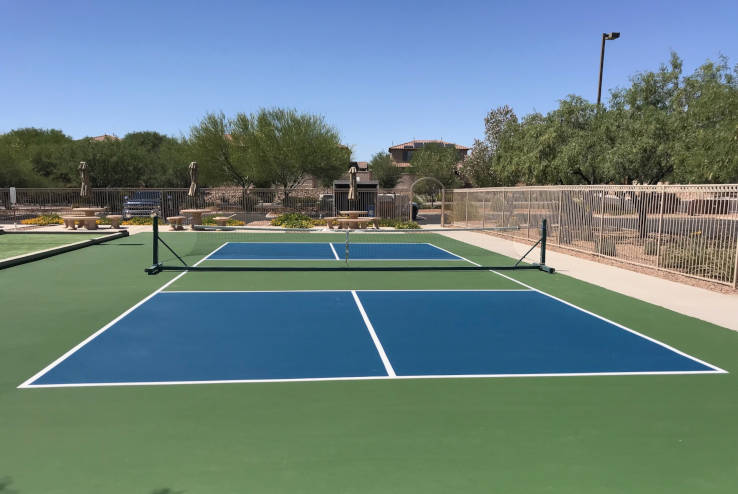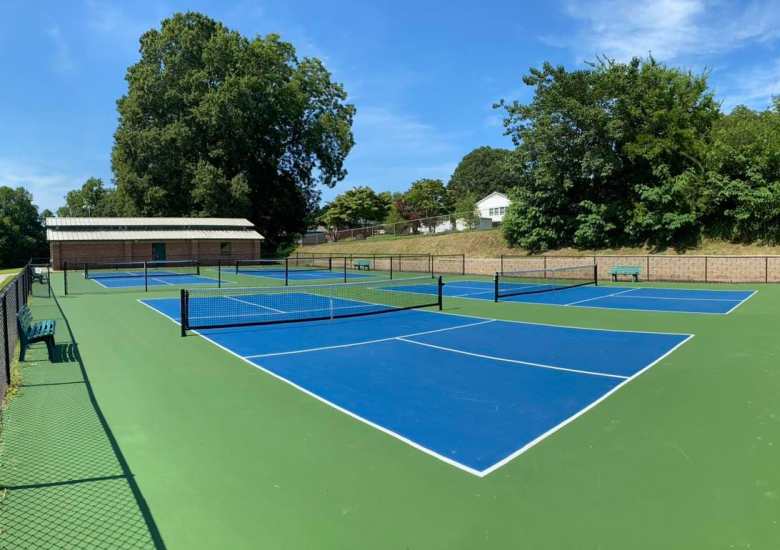Developments in Pickleball Court Construction: Trends You Must Know
Developments in Pickleball Court Construction: Trends You Must Know
Blog Article
Navigating Regulations for Pickleball Court Building in Your Location
Constructing a pickleball court in your area needs a nuanced understanding of numerous local laws, consisting of zoning regulations, building licenses, and safety criteria. Each district enforces details guidelines that can dramatically affect the expediency of your task. Engaging with local authorities and the area is vital for ensuring conformity and cultivating support. Navigating this governing landscape can be complicated and taxing. What are the crucial steps you should think about to prevent prospective risks and ensure a smooth construction process?
Recognizing Regional Zoning Legislations
When thinking about the building and construction of a pickleball court, recognizing local zoning legislations is vital to ensuring conformity and avoiding prospective lawful issues. Zoning guidelines determine how land can be made use of and commonly consist of specs related to entertainment facilities. These laws can vary significantly by district, affecting factors such as court placement, lighting, noise, and size degrees.
Before launching construction, it is important to get in touch with the regional zoning board or planning department to identify the particular guidelines that put on your residential property. Particular zones might restrict leisure activities, while others may call for certain authorizations or adherence to specific standards. It is likewise vital to take into consideration problems, which figure out just how far structures must be from residential property lines or other buildings.
Furthermore, exclusive developments, such as home owner associations (HOAs), might enforce their very own policies regarding the building and use pickleball courts. Comprehending these policies can prevent expensive alterations or lawsuits down the line. Involving with local stakeholders and area members can give valuable insights and foster assistance for your job, ensuring that it aligns with the area's expectations and demands.
Obtaining Necessary Structure Allows
Just how does one navigate the intricacies of obtaining needed structure licenses for a pickleball court? Commonly, you will certainly need to submit a detailed site strategy that describes the proposed court measurements, products, and format.

Once licenses are gotten, it is important to stick to any examination timetables and requirements throughout the building and construction phase. Preserving communication with regional authorities will certainly help with a smoother approval procedure and aid stay clear of prospective obstacles. By completely preparing and recognizing the permitting landscape, you can effectively browse the intricacies associated with constructing a pickleball court while remaining compliant with all neighborhood policies.

Assessing Environmental Effect
A thorough analysis of environmental effect is essential when intending the building of a pickleball court. This examination aids identify potential impacts on regional ecological communities, water resources, and community aesthetics. Trick elements to consider consist of website choice-- making certain that the court is not developed on environmentally sensitive land, such as marshes or environments for endangered species
Soil security and water drainage patterns need to be evaluated to protect against disintegration and water pooling, which might adversely impact bordering plants and wildlife. Additionally, the choice of products is vital; choosing for lasting and green choices reduces environmental harm.
The execution of effective stormwater monitoring practices is one more important facet, as it aids reduce runoff and sedimentation. Involving with regional environmental agencies can supply beneficial understandings right into guidelines and finest methods particular to your location.
Lastly, area input can be beneficial in recognizing any neighborhood environmental worries and fostering support for the project. By carrying out an extensive ecological effect analysis, stakeholders can guarantee that pickleball court building lines up with sustainable techniques and contributes positively to the community's ecological wellness.
Conforming With Safety Criteria
Making sure compliance with safety and security criteria is important for the effective building and operation of a pickleball court. Following well established safety and security policies decreases the threat of crashes and injuries, making sure a protected atmosphere for players.
Trick security standards consist of correct court measurements, surface area materials, and lighting demands. The check this court needs to meet the official measurements of 20 feet broad by 44 feet long for increases play, with appropriate barrier zones to stop injuries from errant balls. Pickleball court construction. The surface needs to be built from non-slip materials to improve grip and lower the chance of falls
In addition, lighting has to suffice for evening play, providing uniform illumination to prevent darkness that can impede exposure. Local building regulations may also dictate specific demands for fence and net height to ensure gamer safety and stop unapproved access to the court location.
Regular examinations and upkeep are necessary to maintain these criteria in time. By focusing on safety and security compliance, court proprietors not just protect players but likewise cultivate a positive reputation within the neighborhood. This dedication to security can motivate higher engagement and satisfaction of the sporting activity, eventually adding to its growth and sustainability.

Engaging the Neighborhood in Planning
Neighborhood involvement in the drawing board of pickleball court construction can considerably improve the job's overall success. Engaging local citizens and stakeholders fosters a sense of possession and motivates collective decision-making, which can lead to broader support for the effort.
To effectively include the neighborhood, organizers should initiate public meetings or workshops, giving a system for homeowners to articulate their point of views and choices pertaining to place, design, and services. Studies and responses forms can also be used to gather insights from a wider audience, guaranteeing that diverse perspectives are considered.
Moreover, forming an area advising board can facilitate continuous conversations and address concerns throughout the planning process. This board can include representatives from different demographics, such as regional colleges, entertainment organizations, and neighborhood watch, consequently magnifying area representation.
Efficient interaction is vital; updates regarding the project need to be on a regular basis shared through e-newsletters, social networks, or regional publications. By focusing on neighborhood interaction, coordinators can cultivate enthusiasm, reduce potential resistance, and develop a pickleball facility that absolutely reverberates with regional worths and demands. This collaborative approach not only improves the job but likewise strengthens community ties.
Verdict
In final thought, navigating the complexities of pickleball court construction requires a thorough understanding of neighborhood policies, consisting of zoning legislations, building authorizations, and safety criteria. By adhering to these standards and fostering collaboration, effective application of pickleball courts can be attained, check here promoting recreational chances and neighborhood well-being.
Constructing a pickleball court in your location needs a nuanced understanding of numerous neighborhood regulations, including zoning legislations, structure permits, and safety criteria.When considering the construction of a pickleball court, comprehending neighborhood zoning laws is essential to ensuring conformity and preventing potential lawful issues. By extensively preparing and recognizing the permitting landscape, you can effectively navigate the intricacies included in building a pickleball court while continuing to be compliant with all neighborhood laws.
In verdict, browsing the intricacies of pickleball court building requires a thorough understanding of neighborhood regulations, including zoning legislations, structure authorizations, and security requirements. By adhering to these read this post here guidelines and cultivating partnership, effective application of pickleball courts can be attained, advertising recreational opportunities and area well-being.
Report this page